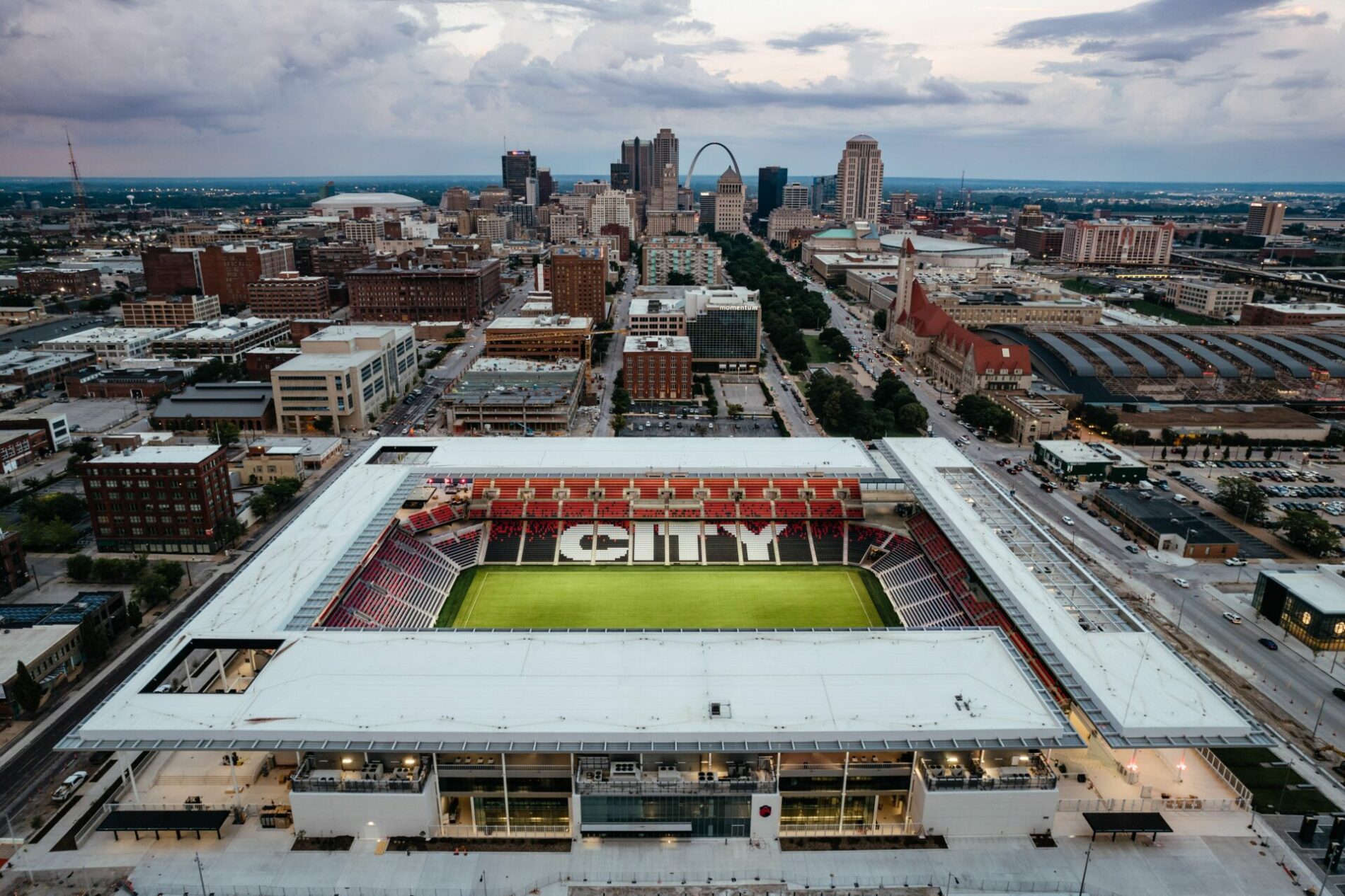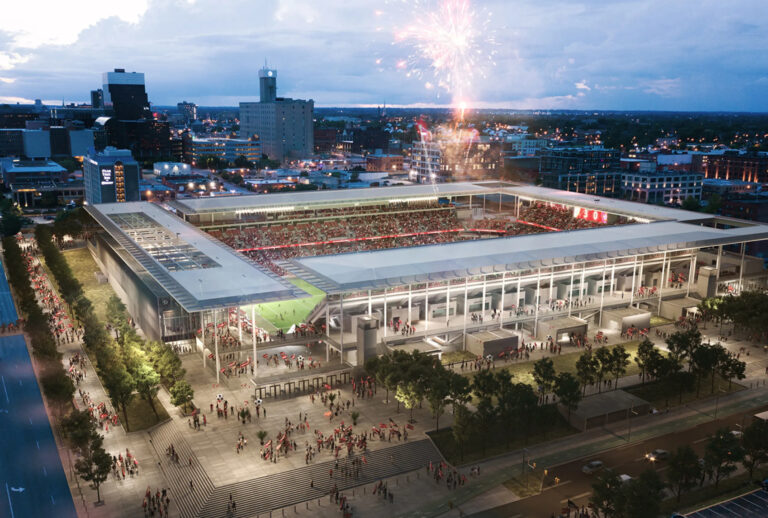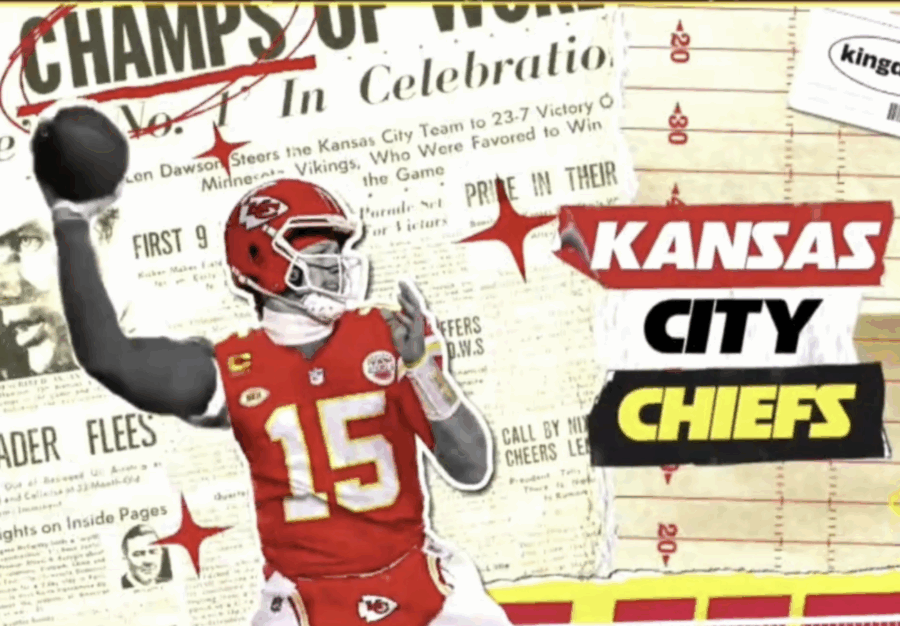Innovation in Expansion: St. Louis City joins Major League Soccer

We’re now only one week away from a new Major League Soccer season, and has so often been the case, the rapidly expanding league will welcome a new team. St. Louis City will become the league’s 29th franchise, with their first home match slated for March 4. Following in the footsteps of Austin (2021) and Charlotte FC (2022), the franchise comes to a region which has a growing population, and comparatively little in the way of competition.
The city is currently home to the Blues,of the NHL, and the MLB’s Cardinals, but there are no major college sports teams in the area. With a metropolitan area of nearly three million people spanning two states, the St. Louis region has thus long been earmarked as a potential wellspring of opportunity.
The city bid for teams in both 2008 and 2009, but failed to receive a team. When a potential joint football and American football arena was proposed in conjunction with the NFL’s Rams fell apart with the team’s move to Los Angeles, the prospects of MLS coming to Missouri seemed dim.
A local connection
Enter the Taylor family, who have strong ties to the area, and are independently wealthy owing to their stake in Enterprise Rent-A-Car. Whereas previous bids had been reliant on taxpayer-funded impetus, the team’s franchise fee, and a purpose-built stadium located in the heart of the city’s downtown would be entirely privately funded.
More importantly, and as a a mark of the league’s continued evolution, the team will also be the league’s first to be female-owned, with Carolyn Kindle taking the reins. Kindle, the granddaughter of Enterprise founder Jack Crawford Taylor, was a relative novice to football, but was determined to foster the sorts of community connections that have characterized their civic enterprise.

Following a recent trend in the league of stadiums that are, like their European counterparts, built in downtown areas, rather than in suburban areas, the stadium, CityPark, will have a capacity of 22,000, large by MLS standards. It will also, like European grounds, feature areas dedicated to supporters, including a standing terrace and an integrated rigging system to allow for the display of tifos.
No seat will be more than 120 feet from the pitch, and with the pitch situated 40 feet below street level, it evokes famous grounds such as the Azteca in Mexico City, and should also contribute to a raucous, noisy atmosphere as well as being integrated into the downtown core.
“Their vision for what they were trying to do in the city really aligned with what we were hoping to achieve with an expansion team,” says MLS commissioner Don Garber.
This vision has also been tangibly rewarded – the team has been inundated with some 60,000 requests for season tickets, and also broke records for jersey sales before the design was even announced. This sort of enthusiasm underscores the massive potential for football in the United States, and how Major League Soccer continues to be the country’s biggest growth sport in terms of finances and audience.
Photos: St. Louis City FC
Other News

News Tank interview: “Samba will serve as a bridge between European clients and the US market”

Samba Digital teams up with the Houston Texans to elevate Somos Texans across the U.S. and Mexico

The Kansas City Chiefs win Emmy Award for “Viva Chiefs’ Kingdom”

Samba Digital announces a new collaboration with FIBA, BCL and BCL Americas

FINAL RESULTS AS OF JUNE 30, 2025 (6 MONTHS)

